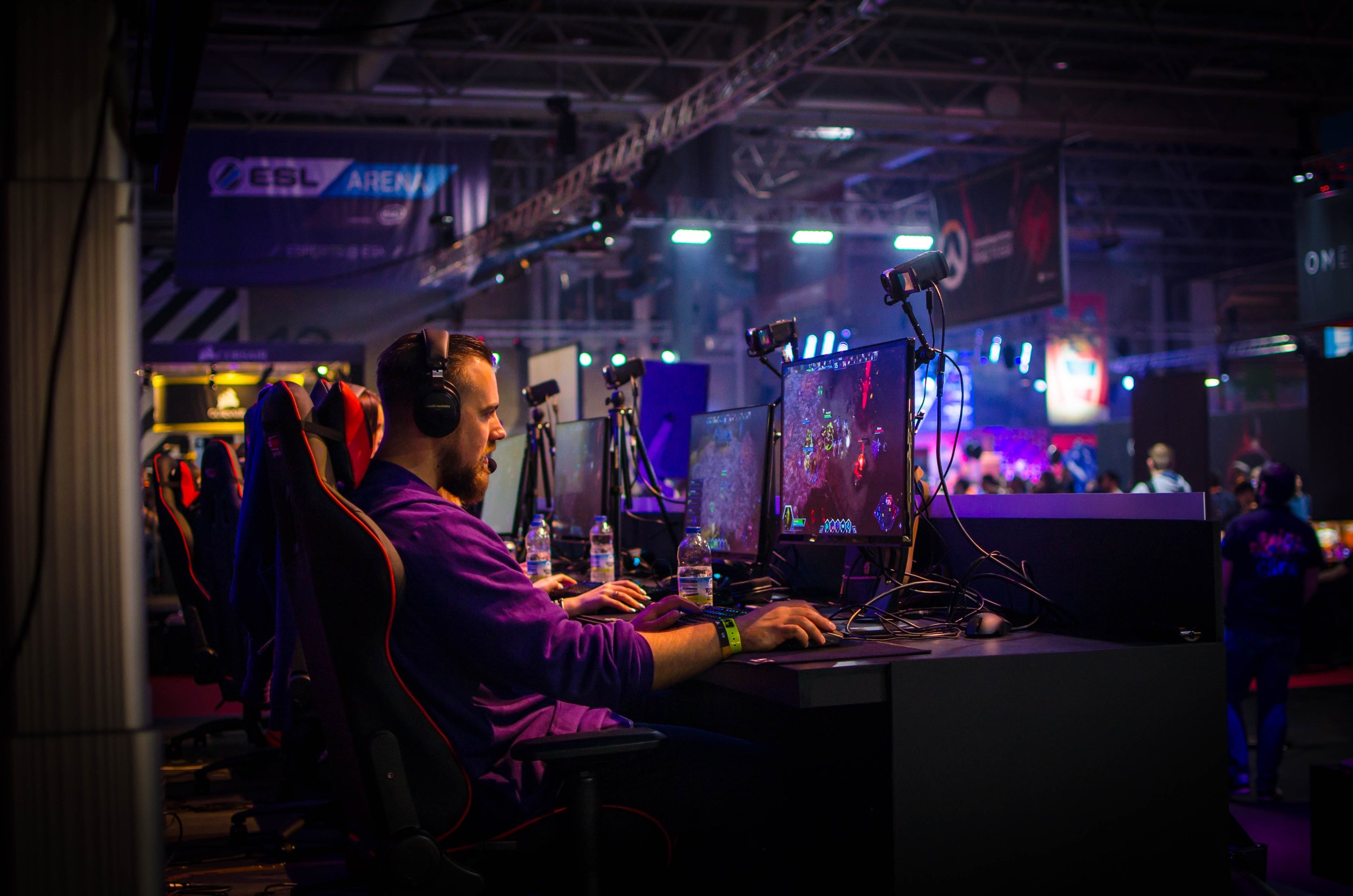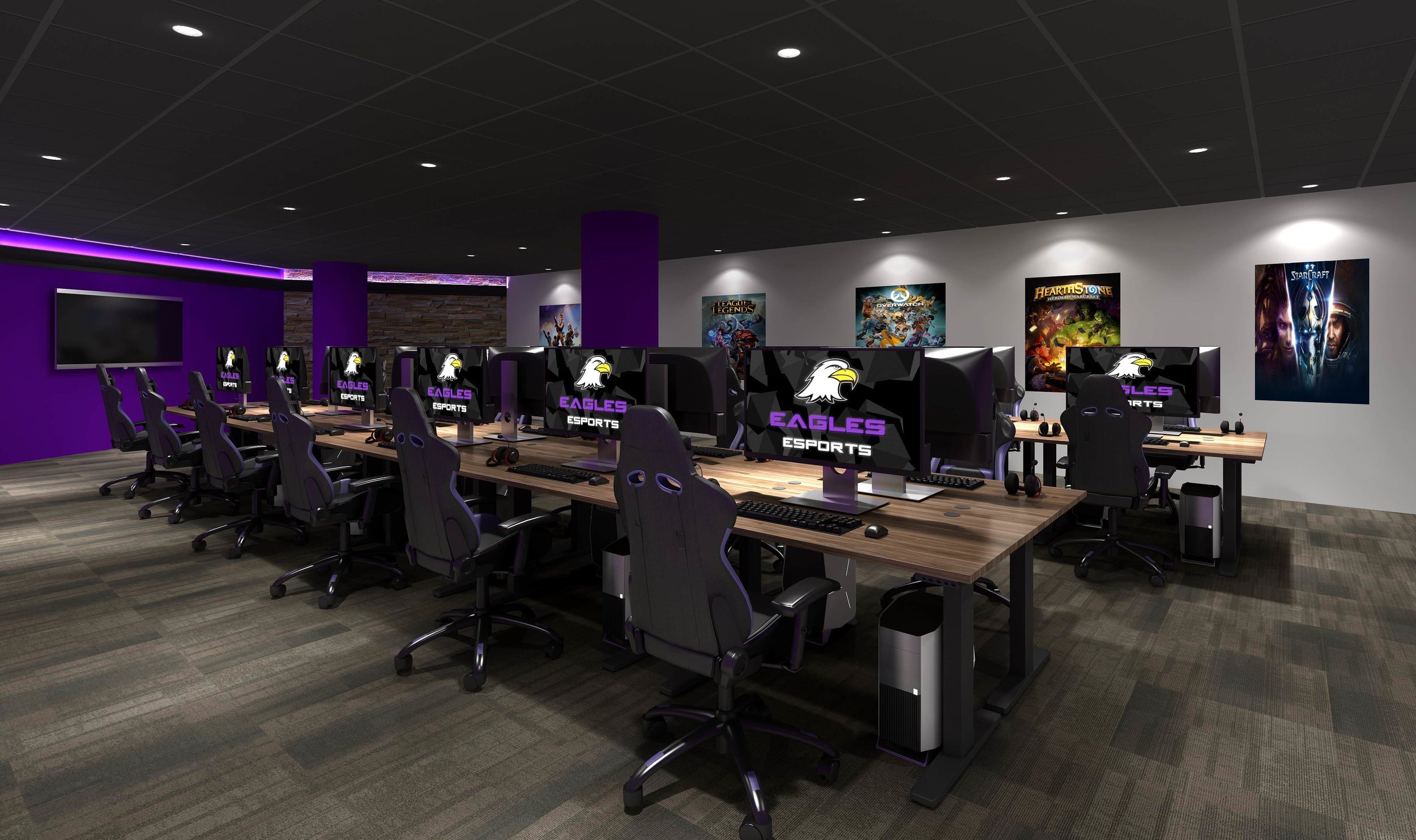What Athletic Trainers Should Know About Esports

Athletic trainers are accustomed to seeing the same groups of athletes coming through their facilities every season: football players in the fall, wrestlers in the winter, softball players in the spring.
There’s a rhythm to this cycle, each sport arriving with its own set of injuries and ailments to contend with. But now, a new sport is shaking up that rhythm, and its equipment consists of a console, a controller and a computer.
That’s right, esports is the latest competitive activity taking the world by storm. Though the stereotypical image of a hardcore gamer is someone holed up in a dark room and sitting stagnant in front of a screen all day, don’t be mistaken — these are called e-sports for a reason. And as with any other sport, esports requires ATs and other medical professionals to work with the athletes to ensure they’re staying on top of their physical and mental health. With esports rising in popularity and with more and more schools adding varsity esports programs, it’s important for ATs to understand the sport and the risks these athletes face.
What is esports?
Esports, as a whole, describes the world of competitive, organized video games. The games themselves vary, with teams competing in leagues dedicated to titles such as “League of Legends,” “Overwatch,” “Hearthstone,” “Fortnite,” and “CS:GO.” Though some leagues host live events and some competitions are even broadcast on television, the majority of esports fans tune in via streaming services such as Twitch. This is where most of the sport’s following has grown — and quite the following it is.

According to research firm Newzoo, the international esports audience will reach 453.8 million this year, generating revenues of $1.1 billion. With that much money at stake, a growing number of esports teams are now fully or partially owned by traditional sports team owners such as Robert Kraft and Stan Kroenke. Those sorts of investors are able to provide esports programs with the same level of medical staff as other professional athletes.
But the popularity extends beyond the professional realm as well. Varsity scholarships have been available to college esports athletes since 2014, and today, the National Association of Collegiate Esports consists of more than 135 member schools and over 3,000 student athletes. There is even discussion about making esports an Olympic event. Much more than just “gaming,” esports is a legitimate sport that requires intense levels of training and conditioning. Without the assistance of athletic trainers, esports athletes can succumb to myriad injuries, both physical and mental.
Common Physical Injuries
When you watch esports, you might not consider it a very physical activity. It involves a lot of sitting, clicking a controller, and staring at a bright screen. But these repeated motions actually put esports athletes at risk for very particular injuries, the most common of which is Carpal Tunnel Syndrome, caused by intense repetitive movements of the fingers. Young gamers that notice their hands beginning to tingle or go numb tend to ignore it, thinking that it will heal on its own. But with time, use of their hand can grow more difficult, and Carpal Tunnel Syndrome can actually end their careers. Education and preventative care are essential to catching injuries like this before they affect one’s future.
Other common areas of concern are the elbows, knees, feet, and neck, all of which are subject to repetitive motion or stress injuries, or even tendinitis. Additionally, medical professionals should work with esports athletes to monitor their eye health, as prolonged periods of staring at a screen can cause significant fatigue and strain, and can even affect their hand-eye coordination — an essential element in their athletic repertoire.
Common Mental Concerns
When working with any athlete, it’s important to focus on both their body and their mind. This is especially true with esports athletes, as their intense training regimen (12-16 hours of gaming a day) tends to keep them inside. In addition to the burnout that can be caused by looking at a screen for that long, their schedule often forces them to give up time with friends and family, and unlike other sports, they don’t enjoy a built-in off-season. Job security is also a concern, as the competitive nature of the burgeoning sport means there is always someone gunning for a player’s job, ready to take it if they don’t succeed. Taking all of this into consideration, it’s no surprise that mental health issues such as depression and anxiety are pervasive throughout the community.
Another item of concern is drug abuse. In the past, esports athletes have admitted to using Adderall during a competition to enhance their performance, as the ADHD medication can help them stay energized and focused. Though there is little evidence that Adderall actually gives players an extra advantage, abusing any prescription medication is dangerous, especially an amphetamine like Adderall that, in addition to increasing one’s heart rate and blood pressure, can be incredibly addictive.
One thing we have tried to do is create a support network for them to become more healthy overall, just like any other athlete. The esports team has voluntary team lifting with our Strength & Conditioning coaches, as well as the option to receive individual nutrition counseling…Every so often we have small groups talks on topics such as posture, hand/forearm injury prevention, and physical activity.
Healthy Habits
So what should the relationship between an esports athlete and an athletic trainer look like? In addition to providing prevention, examination, diagnosis, treatment, and rehabilitation for the conditions listed above, ATs — along with coaches and other medical professionals — should work with esports athletes to establish proper nutrition and general fitness routines.
We talked to David Jameyson, MS, AT, ATC, at Ashland University (which houses one of the country’s top esports programs and uses Healthy Roster for injury documentation and communication) about his experiences providing athletic training services to esports athletes:
 Ashland University Esports
Ashland University Esports
“One thing we have tried to do is create a support network for them to become more healthy overall, just like any other athlete,” Jameyson said. “The esports team has voluntary team lifting with our Strength & Conditioning coaches, as well as the option to receive individual nutrition counseling…Every so often we have small groups talks on topics such as posture, hand/forearm injury prevention, and physical activity.”
Gaming itself is not physically exhausting, but because of their intense commitment to training, many esports athletes neglect to eat healthily, develop a regular sleep cycle, or get enough physical exercise. This sedentary lifestyle that esports has a tendency to breed can lead to mental burnout. Even more seriously, at least six high-profile esports players have suffered spontaneous pneumothorax (collapsed lung), though there has been no direct indication of causation.
Keep in mind that esports is still young, as is the knowledge of how to treat these athletes. New advancements are being made every day. For instance, in 2017, a 2,000-square-foot esports training center opened in Thousand Oaks, California, with state-of-the-art technology designed specifically to perfect gamers’ physical and cognitive skills. And Dr. Levi Harrison, a Los Angeles-based orthopedic surgeon has established the country’s first esports-focused practice, helping to develop specific exercises and ergonomic hand positions for athletes based on what sort of controller they use. There is a lot of ground to cover, so as with any field, it’s important for ATs to stay up-to-date on the latest advancements, continuing their education so they can provide the best possible care.
![HR Logo [Recovered]_Full Color Vertical-1](https://blog.healthyroster.com/hs-fs/hubfs/HR%20Logo%20%5BRecovered%5D_Full%20Color%20Vertical-1.png?width=199&height=178&name=HR%20Logo%20%5BRecovered%5D_Full%20Color%20Vertical-1.png)


.jpg)